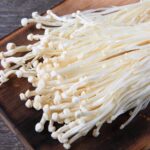The wild mangosteen fruit, native to Vietnam’s northern mountains, the Central Highlands, and Quang Nam, has gained attention for its high economic value and potential health benefits. Survey results show that this fruit can vary in price, depending on its quality and weight. Smaller wild mangosteens are priced at a minimum of VND 500,000 per kg, while larger ones can cost up to several million dong per fruit, with weights ranging from 3 to 4 kg.

The high demand and limited supply of wild mangosteens have made them increasingly rare and sought-after. With their potential medicinal value, these fruits are worth preserving.
So, what makes wild mangosteens so expensive and sought-after? Let’s explore their health benefits.
According to BSCKII Huynh Tan Vu from Ho Chi Minh City University of Medicine and Pharmacy, wild mangosteen fruit, which can grow to several times the size of regular mangosteens, has significant medicinal properties. The fruit is used as a sedative to aid sleep, and when brewed as a tea, it has a calming effect.
Notably, this fruit is one of the key ingredients in the “Tuhn Khun” formula, a well-known remedy for sexual dysfunction among the ethnic groups in Son La. However, experts caution that the use of wild mangosteen-infused liquor as a cure for sexual weakness should be approached with care, as it may have adverse effects.

Wild mangosteen-infused liquor, when used appropriately, can offer various health benefits. However, it’s important to remember that alcohol is a stimulant, and its consumption can lead to erectile dysfunction. Therefore, it is crucial to follow the guidance of medical professionals when using this remedy. Men are advised to consult doctors for advice on treatment methods, proper supplementation, and any necessary dietary restrictions.
In addition to the fruit, the roots of the wild mangosteen tree are also prized in traditional Eastern medicine for their health benefits. In traditional medicine, the roots are described as having a warm and slightly bitter taste, with a mild fragrance. They are believed to stimulate qi, relieve pain, promote blood flow, dispel wind, dissipate stagnation, and reduce swelling.
According to folk wisdom, wild mangosteen roots are used as a tonic, a blood stimulant, a pain reliever, and a digestive aid. A daily dose of 8-16g of finely ground root or bark, infused in alcohol and divided into two doses, is recommended.
For postpartum women, wild mangosteen is believed to improve appetite, reduce pain, support uterine contractions, and speed up the clearance of lochia. A daily infusion of 20-30g of wild mangosteen roots in water is suggested as a replacement for regular water intake.
Additionally, a daily decoction of 6-9g of wild mangosteen roots is recommended for treating kidney weakness, back pain, cough, sore throat, bronchitis, and nervous exhaustion. For women suffering from dysmenorrhea, a combination of wild mangosteen roots, Oai Diep Tu Lan, and peppercorns, infused in alcohol, is suggested.
For stomach aches, an infusion of wild mangosteen bark and roots in alcohol is recommended for daily consumption. Alternatively, a decoction of 8-16g of wild mangosteen roots, brewed like tea and consumed regularly, can stimulate digestion, reduce pain, and aid in the treatment of stomach aches. Despite the potential health benefits of wild mangosteen, it is essential to consult a qualified healthcare professional before using this fruit medicinally and to avoid self-medication.




































